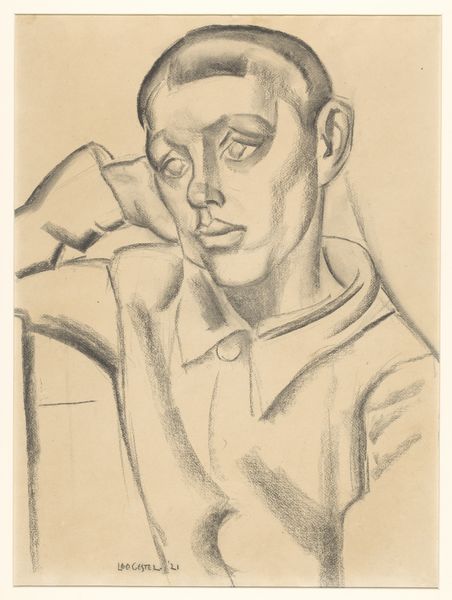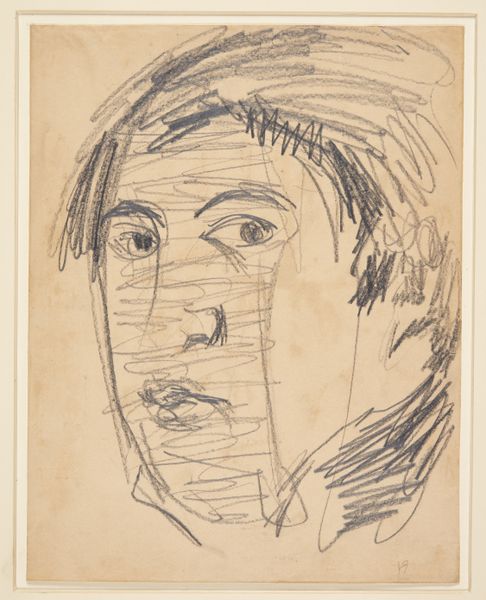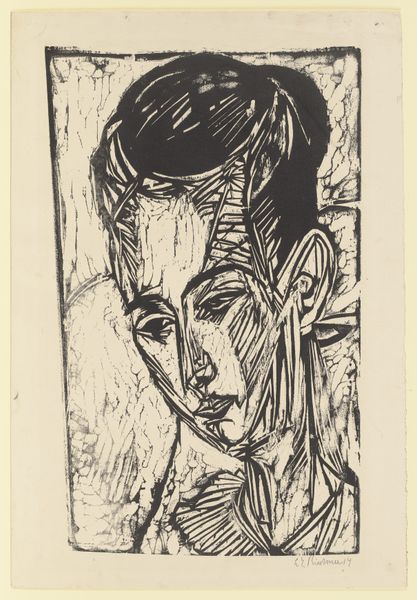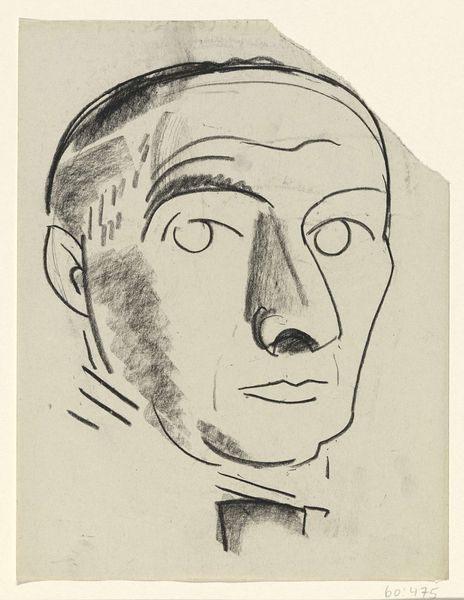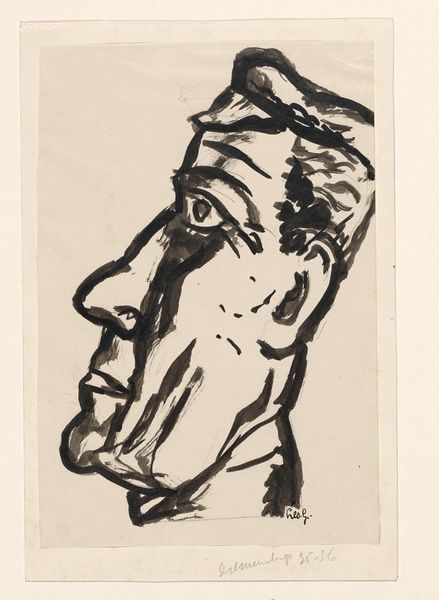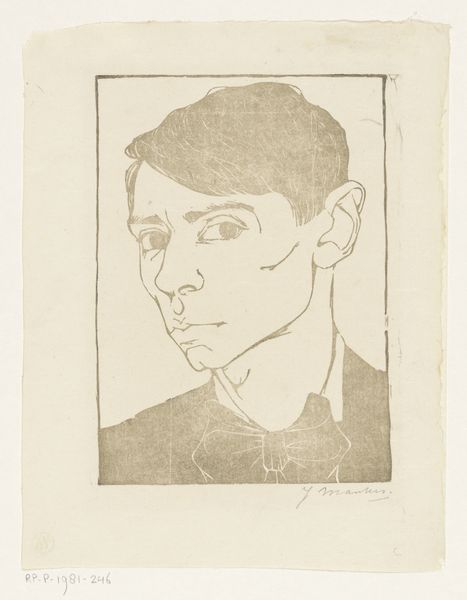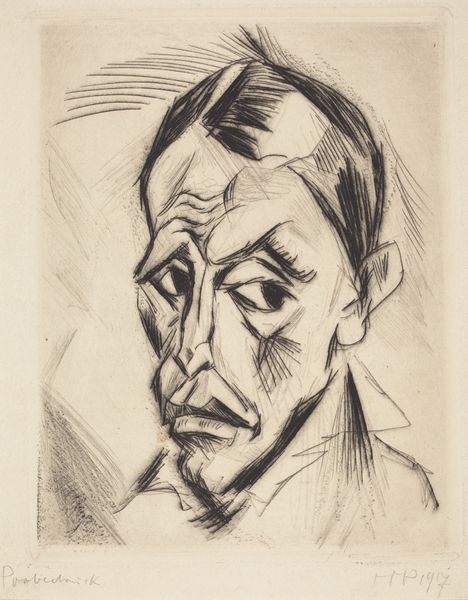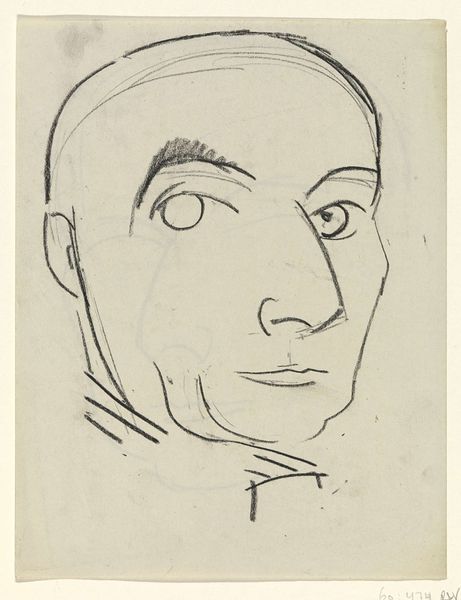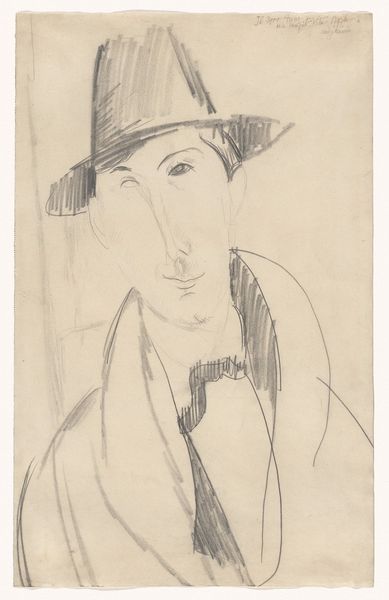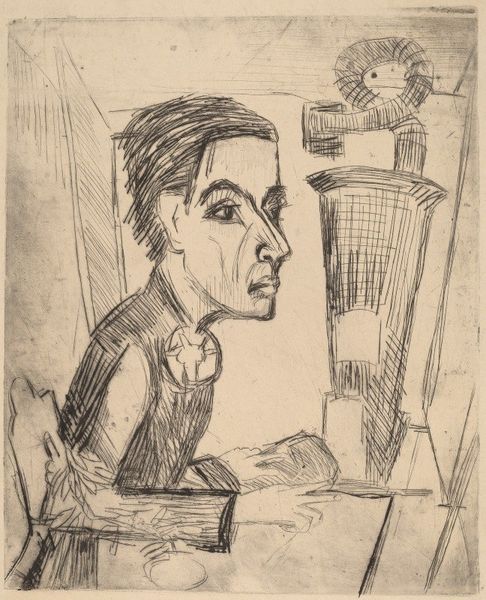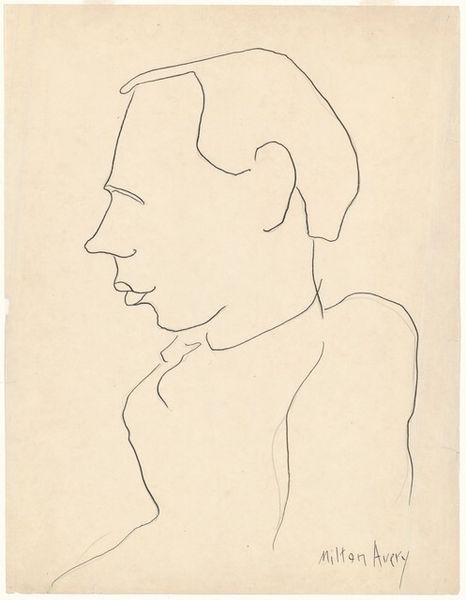
drawing, pencil
#
portrait
#
drawing
#
pencil
#
expressionism
Dimensions: height 580 mm, width 453 mm
Copyright: Rijks Museum: Open Domain
Editor: Here we have Leo Gestel’s "Young Man Resting His Head on His Hand," a pencil drawing from 1920, currently residing in the Rijksmuseum. It strikes me as introspective, almost melancholy. What’s your take on this piece? Curator: It's interesting to consider the labor and resources involved. Think of the mining of graphite, the manufacturing of the pencil itself, the production of paper—all physical processes culminating in this image. How does understanding the material production influence your perception of the artwork? Editor: Well, I hadn’t really thought about it that way. Knowing the pencil and paper had to be manufactured makes it seem less... ethereal? Curator: Precisely. Furthermore, consider the social context. Gestel was working during a period of significant industrial change. Do you see any relationship between the industrialization of art materials and the themes or style present in the drawing? The angularity of his expressionism maybe? Editor: It could be a response, or even a subtle commentary, on the increasing mechanization of life during that era. Gestel’s mark-making definitely seems intentional. Curator: The choice of such readily available and inexpensive materials allows for an intriguing comparison between ‘high art’ and more accessible forms of visual culture and artistic making. Where do we see labor represented? How are people involved in it made invisible by artistic convention or market structure? Editor: Now that you point that out, the deliberate quality in those lines seems heightened because the artist had access to simple tools. The focus then falls squarely on the artistic skill rather than expensive tools. Curator: It’s also worth exploring the history of the Rijksmuseum itself as an institution and how its existence and curation practices affect how we approach this drawing and understand labor. Editor: That's a lot to unpack, but now I’m considering the drawing not just as a portrait, but as the endpoint of an intricate economic and material network. It provides a rich basis for further analysis. Curator: Exactly! It really is like opening up the means of production around art for examination.
Comments
No comments
Be the first to comment and join the conversation on the ultimate creative platform.
